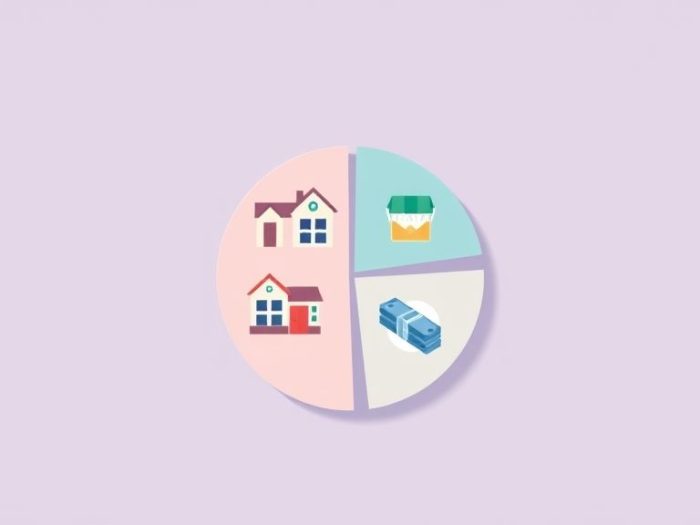Budgeting can often feel overwhelming, but it doesn’t have to be. The 50/30/20 budgeting method provides a simple and effective framework for managing your money, making it a popular choice for simplifying finances and achieving financial goals. This article explores the 50/30/20 method and how you can implement it to gain control of your finances.
Understanding the 50/30/20 Budgeting Method
The 50/30/20 method divides your after-tax income into three categories:
- 50% Needs: Essential expenses that are necessary for survival and daily functioning.
- 30% Wants: Non-essential expenses that enhance your lifestyle and enjoyment.
- 20% Savings/Debt Repayment: Money allocated for savings, investments, and paying off debt.
Breaking Down the Categories
50% Needs
These are expenses you can’t easily cut back on without significantly impacting your quality of life. Examples include:
- Housing (rent or mortgage)
- Groceries
- Utilities (electricity, water, gas)
- Transportation (car payments, gas, public transport)
- Healthcare
- Minimum debt payments
30% Wants
These are expenses that are not essential but make life more enjoyable. Examples include:
- Dining out
- Entertainment (movies, concerts)
- Shopping (clothes, electronics)
- Hobbies
- Travel
- Cable/Streaming services
20% Savings/Debt Repayment
This category is crucial for your financial future. It includes:
- Savings (emergency fund, retirement)
- Debt repayment (beyond minimum payments)
- Investments
Implementing the 50/30/20 Method
- Calculate Your After-Tax Income: Determine your net income after taxes and deductions.
- Track Your Expenses: Monitor your spending for a month to understand where your money is going.
- Categorize Your Expenses: Classify each expense as a need, want, or savings/debt repayment.
- Adjust Your Budget: If your current spending doesn’t align with the 50/30/20 rule, make adjustments.
- Automate Your Finances: Set up automatic transfers to your savings and investment accounts.
Example
Let’s say your monthly after-tax income is $4,000.
- Needs: $2,000
- Wants: $1,200
- Savings/Debt Repayment: $800
Benefits of the 50/30/20 Method
- Simplicity: Easy to understand and implement.
- Flexibility: Allows for some discretionary spending.
- Balance: Promotes a balanced approach to managing money.
- Goal-Oriented: Encourages saving and debt repayment.
Challenges and Considerations
- Income Fluctuations: The method may need adjustments if your income varies.
- High Debt: If you have significant debt, you might need to allocate more than 20% to debt repayment initially.
- Cost of Living: In high-cost-of-living areas, 50% for needs may be insufficient.
Conclusion
The 50/30/20 budgeting method provides a simple yet powerful framework for managing your finances. By categorizing your spending and allocating your income accordingly, you can gain control over your money, achieve your financial goals, and create a more secure financial future.
Related Keywords
50/30/20 budget, 50/30/20 budgeting, 50/30/20 rule, budgeting method, budget plan, financial planning, money management, personal finance, budgeting for beginners, how to budget.
Frequently Asked Questions (FAQ)
1. What is the 50/30/20 budgeting method?
The 50/30/20 method divides your after-tax income into 50% for needs, 30% for wants, and 20% for savings/debt repayment.
2. What falls under the “Needs” category?
Needs are essential expenses like housing, groceries, utilities, transportation, and healthcare.
3. What are examples of “Wants”?
Wants are non-essential expenses like dining out, entertainment, shopping, and hobbies.
4. What does the 20% category include?
The 20% category includes savings (emergency fund, retirement), debt repayment (beyond minimum payments), and investments.
5. How do I implement the 50/30/20 method?
Implement it by calculating your after-tax income, tracking your expenses, categorizing them, adjusting your budget, and automating your finances.
6. What are the benefits of using the 50/30/20 method?
Benefits include simplicity, flexibility, balance, and goal-oriented financial management.
7. What are the challenges of using the 50/30/20 method?
Challenges can arise from income fluctuations, high debt levels, and varying costs of living.
8. Is the 50/30/20 method suitable for everyone?
While it’s a good starting point, it may need adjustments based on individual circumstances and financial goals.
9. What if my “Needs” exceed 50% of my income?
If your “Needs” exceed 50%, try to reduce them or increase your income to better align with the method.
10. Can I adjust the percentages of the 50/30/20 method?
Yes, you can adjust the percentages slightly to fit your specific financial situation and priorities.



